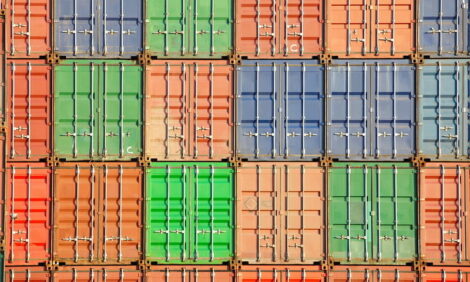



Pork Commentary: 90 Cent Lean Hogs?
CANADA - This week's North American Pork Commentary from Jim Long.The hog market is moving. Friday, November 6 Iowa-Minnesota lean hogs were 53.50. This past Friday Iowa-Minnesota lean hogs were 60.23. The first time Iowa-Minnesota lean hogs have been over 60¢ since May (6 months). This past week the 60¢ plus lean was accomplished despite US hog marketings of 2.267 million. Pork demand is coming back (not anytime soon). Why?
- H1N1 (swine flu) is dropping out of the news. As we expected it was over-hyped overblown media-government hysteria. The demise of swine flu news is all important in increasing domestic pork demand and pork export access.
- In Mexico market hogs are 19.5 pesos a kilogram (over 90¢ US lean). The downsizing of Mexico’s breeding herd from one million sows to around 600,000 has created a great shortfall in Mexican hog production. This will and is leading to record imports of US pork. We expect Mexican hog prices will reach 25 pesos a kilo in 2010 ($1.10 US lean lb) and record profits for Mexican pork importers and producers.
If we have one more person tell us that we should not be optimistic! We are encouraging people too much! Tell us that they hope market stays low enough to take out another 500,000 sows in the US breeding herd! We are going to get worked up. How much pain is enough? We think enough already! Financial losses and true current market value on fixed assets = a bankrupt industry. Producers in the last two years have lost most if not all of their equity. We believe, unlike most if not all the economists, the liquidation of the Canada-USA breeding herd has already been large enough (600,000 less by Dec 1st since Sept 2007) to correct supply issues relative to where we see demand in 2010.
Other positives to drive hog prices higher is the herd liquidation in Brazil and China’s current price points of 95¢ US lean. The benefit of market access to China markets goes like this. China producers give or take 600 million hogs a year. ½ of 1 per cent imports to China is equivalent to 3 million market hogs. We believe the 95¢ lean price in China is a reflection of decline in supply. Expect Chinese imports to encourage US-Canada prices in 2010.
As the market moves up we expect cash prices to push lean hog futures. The three aspects of markets: supply – demand – psychology. Supply is going down, demand is going up and the psychology of which there has been nothing much positive to drive hog prices higher for over a year we believe will turn to bullish.
What we see is a volatile mix of factors which could set the markets on fire. Prices have tremendous upside potential and we are seeing scenarios where 90¢ lean hogs could be hit in 2010.
Manitoba Hog Days
Last week we attended Manitoba Hog Days. Our observations:
- Manitoba has approximately 350,000 sows. It is home of Canada’s largest packing plant – Maple Leaf Brandon. It is also the source of most small pigs sent to the USA.
- A real reflection of where we are in the industry was the total lack of participation as exhibitors of banks and credit unions. Only Farm Credit participated. In the past all major banks and local credit unions exhibited. Tell us how much they want to do in the hog business. Also a good sign in some ways. Must mean the market is turning.
- We talked to suppliers and creditors for Big Sky Farms (the world’s largest government owned farm) now in creditor protection. Not one of these creditors had confidence in Big Sky’s chance of survival. None had confidence in Big Sky’s management. They also wondered how anyone would refinance Big Sky when the Saskatchewan Government which owns 62 per cent of Big Sky and has the financial resources refuses to invest further money. Meanwhile, Big Sky continues to lose $500,000 plus a week. Stay tuned.
- What’s interesting is that it appears that the western Canada farrow to finish land based grain producing independent operators are holding it together with next to none of these going out of business. The large production systems are in the west. Hytek, Puratone and Big Sky have liquidated and are liquidating a significant amount of their production.
Summary
The hog market is getting stronger. The latest US weekly sow marketings were 67,000 plus. That amount means ongoing liquidation is continuing and in our opinion will continue. As hog supply continues to decline we expect domestic and export demand will also get stronger. With this, hog prices will increase to the point of farrow to finish breakeven by February. We also believe the scenario is developing for lean hogs to hit 90¢ next year. Hope so … we all need it.

Colony cuts 20 to 25 dollars a pig over other independent producers
By Harry Siemens –
Jack Hofer is the manager of the hog business on the Woodland Colony of Poplar Point, whose 900 sow farrow to finish hog operation has produced 30 plus weanlings per sow per year for 3 consecutive years.
To produce 30 pigs per sow per year versus 20 can obviously make the difference of profit and loss for a hog farm, especially during difficult times like the industry has never seen before. “It has been a tough industry the last couple of years. When you wean 30 pigs per sow, you can see the light at the end of the tunnel,” said Hofer in an interview from his barn. “With fewer producers, it’s good to be on top. We feel really blessed and provide us with a good feeling.”

He said Genesus Genetics has provided the operation with good genetics, The KS 11 gilts with Duroc boars, they produce quality pigs that go to market and pay the bills. That is the bottom line.
Woodland uses internal purebred landrace to make their F1 gilts. They run about 10 percent of the herd Landrace, about 90 head. The balance of the herd is F1’s which they breed to Genesus Duroc boars via artificial insemination to make market hogs.
In 2008, Woodland produced 30.03 pigs weaned per sow, 26,400 pigs marketed from their 915 sows to Maple Leaf in Brandon.
Four people, including Hofer run the barn. “You gotta go, not time to sit around, you have to hustle. It takes a lot to stay on top,” he said. “It takes team work. Everybody has to have the same aims and goals. You have to have a determined team, a team that doesn’t want to be second best.”
Hofer, said while the last two years have been tough, their operation has still been able to turn a profit.
“If you are producing over 25 pigs per sow, according to public statistics, in the top 15 to 20 per cent of North American production, but if you are over 30 per cent, you are at the top,” he said.
The tough years encouraged them to work hard on their feed supply, trying to keep it as cheap as possible, but not to the point of where it could hurt their production. The colony hasn’t had to think of downsizing their herd because the bottom line has stayed in the black. Consequently, they don’t need to even look at federal government’s loan or transition programs.
“We produce our own grains, use our manure on our land, take us as an enterprise, the hog barns have always made money,” said Hofer. “On labour, we build our own barns, we have our own technicians, and it is less costly to produce pigs in a colony.”
While not able to speak on behalf of other colonies in Canada, he assumes their breakeven point is well below the independent producer who is out there buying feed, buying his own grains, and probably has to put his manure on his neighbour’s fields or something like it.
He claims the colonies’ breakeven point is 20 to 25 dollars below that of the independent producer.
Marketing through Maple Leaf in Brandon works well for them.
“You have to market, no matter what you produce,” he said. “If you have a lot of good hogs, that grow and grade well, that pays the bills. Shipping pigs to Maple Leaf pays the bills on our barn, that is the bottom line. We shipped south four or five years ago. It is too risky. You are playing Russian roulette every time you cross the border.”
Hofer looks at the world of hog production with some sadness, but also faces the reality of what is happening to the industry.
“Obviously, you feel sorry for producers that have to leave, family farms that have been in the business for many years, generation after generation handing down the hog business, suddenly you hear the people are going bankrupt,” he said. “It is sad, but it has to be this way. If it wasn’t this way, then we’d be ones going broke or we would all go broke.”
If Canadians want to continue to eat Canadian-produced pork, and not import from China or some such place, consumers must buy homegrown products to keep this industry alive and afloat. “If we keep importing cheap pork from other countries, we will kill our industry,” he said.









